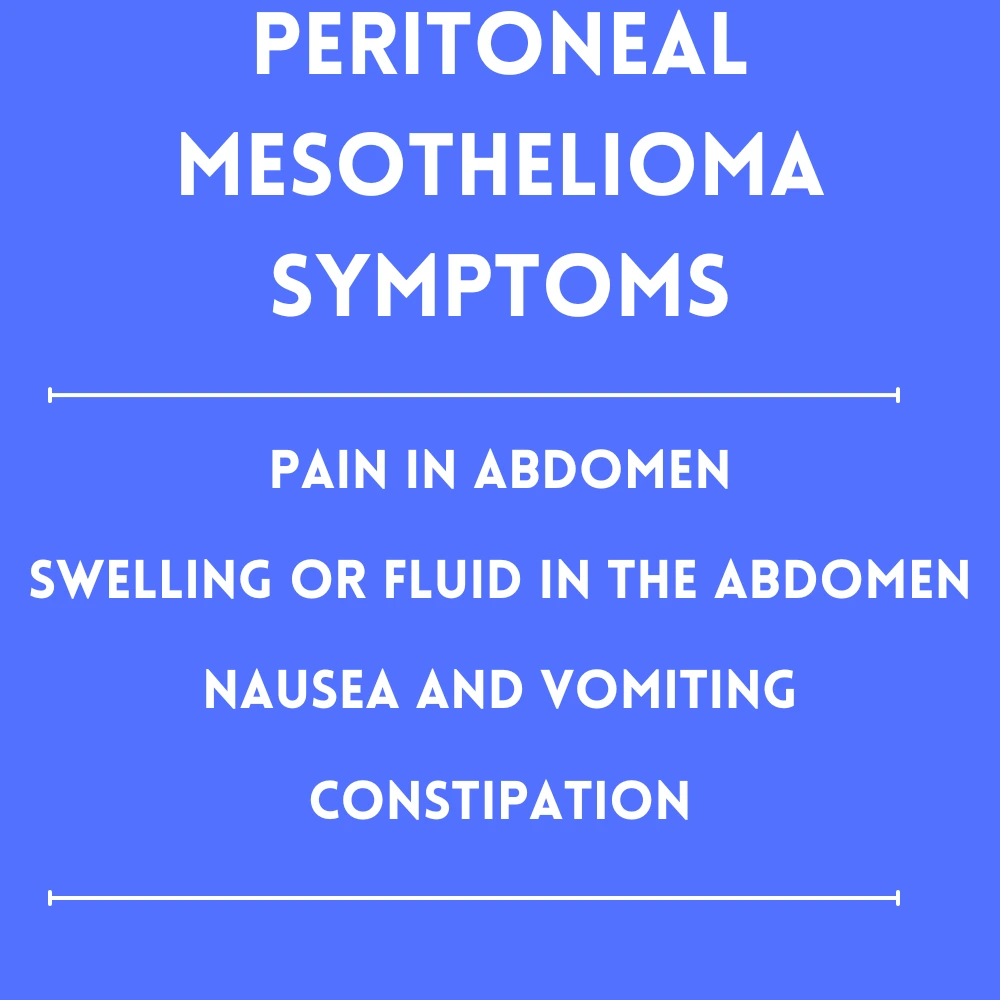There are four types of mesothelioma, the most common being pleural mesothelioma, which begins in the lining of the lung. The second most common type of mesothelioma is peritoneal mesothelioma, which begins in the abdominal cavity. Peritoneal mesothelioma affects about 20% of all mesothelioma patients. The other two types of mesothelioma are pericardial mesothelioma and mesothelioma of the tunica vaginalis, which are both extremely rare.

There are about 500 to 700 new cases of peritoneal mesothelioma each year in the United States, and the average age of diagnosis is 64 years. Based on data, peritoneal mesothelioma affects men and women equally. This differs from pleural mesothelioma, which is usually seen in men, as men typically occupied the jobs in which asbestos was heavily used. Most people diagnosed with peritoneal mesothelioma are non-Hispanic white individuals. This type of mesothelioma is usually treated through cytoreductive surgery to remove the tumors in the abdomen. This treatment is usually coupled with hyperthermic intraperitoneal chemotherapy (HIPEC). This cancer is usually diagnosed around 20 years after asbestos exposure.
Subtypes of Peritoneal Mesothelioma
There are three histologic subtypes of peritoneal mesothelioma that tend to present different outcomes and aggressiveness. For instance, epithelioid mesothelioma tends to result in the best prognosis compared to the other two subtypes. The other two subtypes are sarcomatoid and biphasic, biphasic encompassing both epithelioid and sarcomatoid cells.
Symptoms of Peritoneal Mesothelioma
Symptoms may include abdominal pain, nausea, vomiting, swelling or fluid in the abdomen, and constipation. Patients may also experience weight loss, chest pain, and dyspnea. From the time a victim of peritoneal mesothelioma first experiences symptoms to the time that they are diagnosed, there is usually about a 4–6-month passage of time.
A CT scan is usually used as the imaging test for diagnosis.
Staging
The peritoneal carcinoma index (PCI) can be used to find out the burden and distribution of the cancer. The PCI may be gathered before surgery through a CT scan, however, the best way to determine the PCI is through an intraoperative assessment. This assessment is done by separating the peritoneal cavity into 13 different regions. The sizes of the legions in the regions are then graded from no disease to extensive disease. These scores are then added up on a scale of 0-39, 0 meaning that there has been a complete cytoreduction, and 39 meaning that the disease is very burdensome.
It is necessary to detect peritoneal mesothelioma early for the best possible outcome to be possible when it comes to treatment.
Other Types of Treatment
Except in a select number of cases, systemic therapy is not used as much to treat peritoneal mesothelioma as it is to treat pleural mesothelioma. However, systemic chemotherapy may be administered to patients who have unresectable mesothelioma, meaning that the tumor cannot be removed through surgery. It may also be used in cases where patients refuse surgery, and in those who are not physically able to undergo a surgical procedure.
If you or a loved one has been diagnosed with mesothelioma, or another asbestos-related disease, please contact us at (800) 505-6000 for legal help. To find out more information, fill out the form on our Homepage.
Sources:
